– 28 September, 2017
'The Tomorrow People' presents a diverse range of strategies that emerging artists are adopting in response to our complex, challenging and contradictory times. Its confident use of space—clustering both consonant and dissonant works—bring further relationships and associations to the surface while arguably allowing the projects to exist on their own terms. The extensive public programme displays a commitment to social engagement which ensures a legacy beyond the moment of the exhibition.
Wellington
Wendelien Bakker, Diva Blair, Jesse Bowling, Teghan Burt, Quishile Charan, Sam Clague, Hikalu Clarke, Claudia Dunes & Rainer Weston, Fresh and Fruity, William Linscott, Isabella Loudon, Theo Macdonald, Annie Mackenzie & Dave Marshall, Ammon Ngakuru, Christina Pataialii, Maddy Plimmer, Deborah Rundle, Christopher Ulutupu, Tim Wagg, Daegan Wells, Aliyah Winter, Xun Cao, Yllwbro
The Tomorrow People
Curated by Christina Barton, Stephen Cleland & Simon Gennard
22 July - 1 October 2017
Lately I’ve been pondering cyberpunk author William Gibson’s assertion that “the future is already here”, albeit yesterday’s tomorrow. Perhaps it is certain unfolding geopolitical events and the increasingly apparent effects of climate change that make it feel that way. Sure, the future is unevenly distributed, but what might one do with one’s share?
This text began in earnest during the opening weekend of the Adam Art Gallery’s ambitious showcase of emerging New Zealand art, The Tomorrow People. Subsequently, “life happened”, as they say, and I find myself completing it some time later, both as the exhibition draws to a close, and Aotearoa’s post-election future hangs in the balance. It appears a new world is emerging, yet the old one is holding on tight: backs to the future.
Winston Peters, leader of New Zealand First and the oldest serving member of parliament, holds the balance of power. One might speculate on just what will be traded in the coming weeks and indeed, years; the media certainly have. At the other end of the spectrum, 23 year old Green Party member and former Auckland mayoral candidate, Chloe Swarbrick, just became New Zealand’s youngest MP in 42 years. Swarbrick officially opened the Adam’s Art Gallery’s show—a nice touch.
The Tomorrow People was a 1974 British science fiction television series centred on a select group of evolved teenagers with supernatural powers such as teleportation, telekinesis and telepathy. The series was also the subject of more recent remakes. Speaking of remakes, though not cited, the Adam’s exhibition title also refers to a show of then emerging art at the Physics Room in 2001, Tomorrow People. A take on a take on a take.
The Physics Room show’s curators Tessa Laird and Joyce Campbell also referenced the science fiction series in their exhibition text, linking the teenagers’ telepathic powers—able to traverse the globe—to their participating artists’ connection to developments and projects in international art. Fittingly, the show also toured to Los Angeles in 2002. The artists—Gavin Hipkins, Joyce Campbell, Ani O’Neill, Ronnie Van Hout, Saskia Leek, Daniel Malone and Violet Faigan—went on to forge successful careers both domestically and abroad.
Their relative success reminds us that ‘emerging artist’ exhibitions are, more often than not, self-fulfilling prophecies. “Here is the art of tomorrow” they invariably proclaim, and in so doing, profoundly shape this very course of events. Endorsed by the cultural capital of the public gallery, the artists’ subsequent reappearance in other high profile exhibitions act as proof of their importance and our deserved attention, while further validating the curatorial selections of the early talent scouts. In this sense, public galleries play a speculative role in futures trading and the politics of emergence. This is not to negate the value of such exhibitions. Indeed, many would argue they should be more frequent and widespread in Aotearoa. A number of artists will build more successful careers from the platform of this exhibition, and deservedly so.
The show is supported by an exhibition catalogue and generous array of commissioned texts by emerging art writers, alongside numerous onsite and offsite talks and workshops. These collectively ensure the exhibition is a multifaceted, elongated and evolving event. It was particularly rewarding to see workshops for emerging arts writers programmed, further reflected in a growing number across the country in the last year or so. These writers are, of course, the inheritors of our literary and critical heritage. The Adam sets a benchmark here which it would be rewarding to see more galleries adopt, along with fair, non-exploitative remuneration from which futures can actually be built. Arts writing fees are modest in New Zealand—that’s putting it diplomatically.
Chloe Geoghegan’s rigorous and comprehensive review aptly notes the Adam Art Gallery Director, Tina Barton’s central role in the project. Yet it is also important to foreground her collaborators, Adam Art Gallery Curator, Stephen Cleland and independent curator, Simon Gennard, who add complementary perspectives from successive younger generations. This is a strength of the project, and given the centrality of youth to its premise, one which walks the talk.
Lana Lopesi critiques the operation and curatorial premise of the show, comparing it with two other recent exhibitions at ARTSPACE—New Perspectives and Dirt Future—which also explored youth and emergence, those problematic art world obsessions. Her critique is a throw down to public galleries to become more artist-centred in their philosophy and modes of engagement.
Mark Amery discusses what it might mean for galleries to form ‘safe spaces’—policies and practices which accept and respect artists in their relations with them—prompted by Fresh and Fruity’s project for the Adam. Amery promotes this corrective to the more damaging aspects of the industry, and asserts the more shelter afforded diversity and radical new ideas the better.
Jane Wallace also provides a personal and poetic response to the show for Salient. These writers make a series of unique and valuable contributions to understandings of the exhibition.
Engaging with the 25 artists and collectives represented here is beyond the scope of this review. Geoghegan does an excellent job of mapping the expansive terrain of the show, and selected artists are discussed at length in other reviews. In light of this, I would prefer to contribute a few thoughts centred on selected works which resonated with me.
Xun Cao’s photographs from the Dick Head and Passion of Cut Sleeves series—as described by the artist—originate in an examination of shame. Curator Simon Gennard links this shame to the queer body and its failure to comply with heteronormative expectations. Cao’s works however, claim strength in their thwarting of these gendered expectations and unique remixing of materials and signs. Appropriating modes of fashion photography and performance documentation, the images provoke a politicised eroticism, while offering a fresh, often humorous and genuinely edgy playfulness. Cao is emblematic of new generations of Asian New Zealanders who are more confidently coming to the fore and who have much to offer.
Christina Pataialii’s large, energetic paintings depict brown heroes from her youth, such as Michael Jackson, Tupac, Mike Tyson and The Rock. In a beautiful inversion of the hegemonic order, there is even a token white guy in the form of Kenny Rogers. In the artist talk, Pataialii discussed the scarcity of role models of colour in her childhood. As problematic as these particular role models might appear, they are all the more compelling when rendered so singularly in paint. The confident markings include spray painted lines one might associate with graffiti and street art, accompanied by broad brush strokes. The canvases have been removed from their stretchers and hang loose, nailed directly to the wall. They are also well paired alongside a video work by Chris Ulutupu, celebrating and playfully engaging with representations of the Pacific.
Jesse Bowling’s silent video Apple of My Eye is displayed on a large portrait-oriented LCD screen, depicting the artist’s eyes tracing the screen of his Apple iPhone, taking the vantage point of the phone camera looking back. Shot in the dark with the artist apparently in bed, the resulting blue cast adds to the image’s unnerving presence. Though knowingly reflective of the now ubiquitous use of smartphones in most areas of life—particularly for his ‘digital native’ generation—the camera’s point of view also evokes the latest ghost in the machine: the surveillance state. William Linscott’s nearby video XCII engages similar territory, where the pervasiveness of surveillance and the contestation of digital frontiers are certain to shape what lies ahead.
Wendelien Bakker’s Moon Deed in Concrete operates as a poetic reflection on the precarious economic position artists normally occupy. Recently employed on a fixed term teaching contract at the Elam School of Fine Arts, she used a portion of the funds to officially purchase an acre of land on the moon, a slippery legal phenomenon. In 2016, this was at a time when the cost of an average home in Auckland hit one million New Zealand dollars, and living on the moon seemed perhaps a more likely prospect than ever purchasing a home here. Bakker cast the deed for this sale in concrete, its pockmarked grey surface evoking the moon’s, an imagined place beyond cemented in our minds.
Annie Mackenzie and Dave Marshall’s collaborative installation International Foodcourt / Global Classic includes foodcourt signage, hospitality equipment, pottery, fluorescent lights and woven wall hangings. Marshall, an artist and potter, was working in a foodcourt in Wellington and has included painted signs he made for other food stalls, many of which are no longer in operation. Mackenzie, an artist and weaver, also spent time in the foodcourt, discussing stall holders’ use of textiles in the development of her own. Her hand-loomed wall hangings convincingly imitate mass-produced tea towels, yet with decoratively braided ends. In the accompanying catalogue, writer and artist Dilohana Lekamge notes that Mackenzie’s process reverses the industrial process and cheap labour involved in their production.
Lekamge continues: “Mackenzie and Marshall seem to be drawn to this setting because it is a microcosm of the immigrant experience in a country like New Zealand. For the people running the food stalls, who are often immigrants or from immigrant families, running a business here is a way to make a profit from their cultural differences and to offer a sense of home to those who share their background.” Here we might make further connections to the ‘internationalism’ of the Physics Room’s Tomorrow People exhibition, yet in an altogether different way.
During the artist talk, Tina Barton noted Tim Wagg’s work 1991 as the starting point for this exhibition. It is also a work which most directly addresses politics proper. The installation features a video displayed on a large LCD panel atop a mobile stand which the audience may view from a complementary set of executive office chairs. Wagg’s video investigates the moment of 1991: the release of former National Party Finance Minister Ruth Richardson’s infamous “Mother of All Budgets” and the year of his birth. The footage features a 3D printer fabricating an object which is slowly revealed, intercut with shots of Richardson’s home, whom he interviewed for the project. Richardson espouses her neoliberal philosophy and claims victory in the legacy of her financial reform.
Richardson’s restructuring of the economy was a key moment in New Zealand’s history and one whose effects continue to be felt. Writer and curator Francis McWhannell notes in the catalogue: “1991 does not assume an overt position with respect to Richardson, her actions, or her views. Nor does it deliver its own campaign message. In attempting to comprehend the past, Wagg is less interested in reducing it down than in teasing out its texture, throwing the caricature into relief that we may better appreciate our present and better prepare ourselves for the future.”
The Tomorrow People presents a diverse range of strategies that emerging artists are adopting in response to these complex, challenging and contradictory times. Its confident use of space—clustering both consonant and dissonant works—bring further relationships and associations to the surface while arguably allowing the projects to exist on their own terms. The extensive public programme displays a commitment to social engagement which ensures a legacy beyond the moment of the exhibition. In a context where public galleries appear increasingly risk averse, this is a successful experiment and a meaningful endeavour.
Geoghegan, Lopesi and Amery’s incisive critiques of the show also provide a strong mandate for a follow up exhibition in a few years—by the Adam or other galleries—to revise and extend the ground work established here. While there have been a number of shows focussed on emerging artists recently, Amery also notes there are too few larger platforms in New Zealand for the public to be challenged by the ideas of emerging generations. One might further speculate on the moment of 2020 for a major sequel, which does have a nice ring to it. It could even be timed to coincide with the next election. Let’s do this?
Emil McAvoy
![Xun Cao, Untitled [detail], inkjet on paper. Courtesy of the artist. On view in the exhibition The Tomorrow People, Adam Art Gallery Te Pātaka Toi, 22 July – 1 October 2017. Photo: Emil McAvoy.](/media/thumbs/uploads/2017_09/001-IMG_1835-xun_cao_jpg_380x500_q85.jpg)
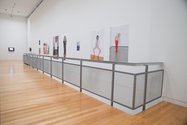
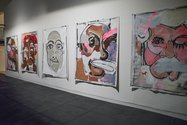


![Annie Mackenzie & Dave Marshall, International Foodcourt/Global Classic [detail], 2016, weaving, pottery, signage, hospitality equipment. Courtesy of the artists & the collections of Zina Swanson & James Oram, Miranda Parkes, Eloise Kitson & H. Knowles](/media/thumbs/uploads/2017_09/006-IMG_1824-anniedave_jpg_380x125_q85.jpg)
![Annie Mackenzie & Dave Marshall, International Foodcourt/Global Classic [detail], 2016, hand weaving, pottery, signage, hospitality equipment. Photo: Shaun Matthews](/media/thumbs/uploads/2017_09/007-Tomorrow_People_opening_21_7_2017109_AnnieMackenzie_jpg_380x125_q85.jpg)
 Two Rooms presents a program of residencies and projects
Two Rooms presents a program of residencies and projects Advertising in this column
Advertising in this column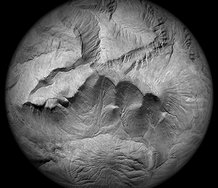

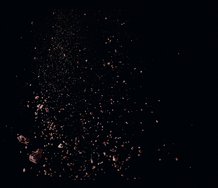
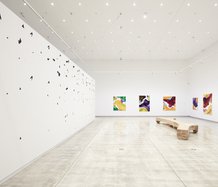
This Discussion has 0 comments.
Comment
Participate
Register to Participate.
Sign in
Sign in to an existing account.